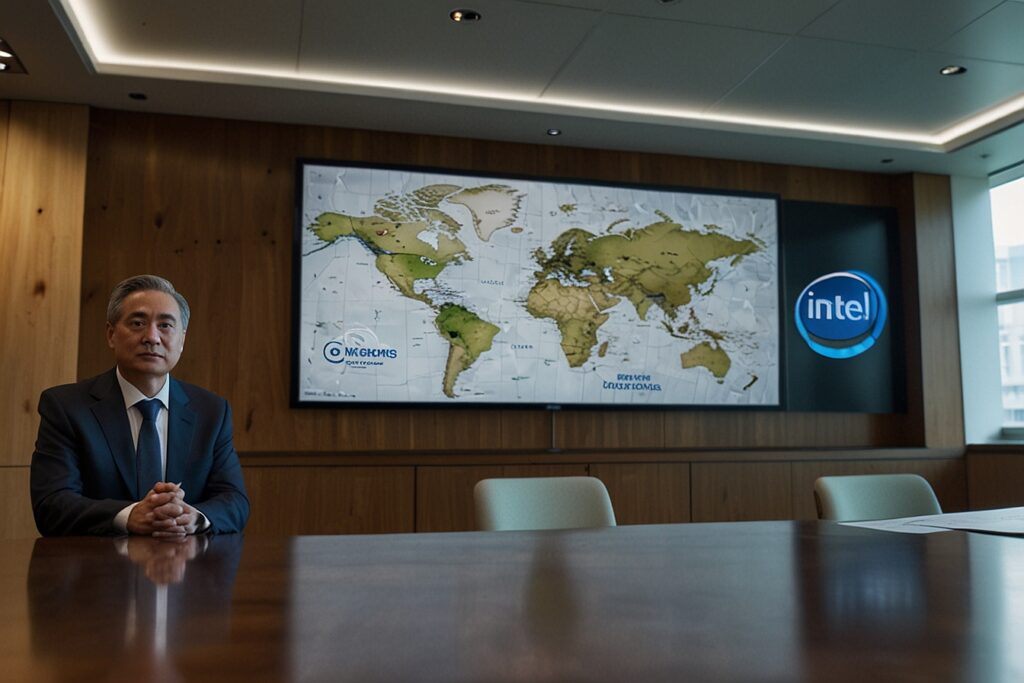
TL;DR
- Intel halts manufacturing plans in Germany and Poland after prolonged suspension.
- CEO Lip-Bu Tan consolidates testing operations to Vietnam and Malaysia.
- $28B Ohio chip factory delayed further amid capital spending cuts.
- Company trims 15% of workforce and removes 50% of management layers.
- Intel Foundry business hit with internal layoffs as focus shifts to core operations.
Intel Scales Back Global Manufacturing Ambitions
Intel has officially canceled several of its international manufacturing projects as part of a bold restructuring plan initiated by CEO Lip-Bu Tan. The chipmaker, during its second-quarter earnings call on Thursday, confirmed it will not move forward with previously announced facilities in Germany and Poland.
The two projects—a proposed chip fabrication plant in Germany and a testing and assembly site in Poland—were first put on hold in 2024 and have now been officially canceled. Intel is redirecting its focus to locations with proven infrastructure and long-term demand.
Asia Becomes Intel’s Testing Hub
As part of its restructuring, Intel will consolidate its testing operations, exiting Costa Rica and concentrating activities in Vietnam and Malaysia. Tan acknowledged that previous capital expenditures were out of sync with demand and labeled past capacity investments as “unwise and excessive.”
“Our factory footprint has become needlessly fragmented,” Tan said during the earnings call. “Going forward, we will grow our capacity based solely on volume commitments and deploy capex in lockstep with tangible milestones.”
This shift reflects Intel’s new operational discipline, aligning production expansion with concrete, committed demand rather than speculative growth.
$28 Billion Ohio Plant Faces Fresh Setback
Intel’s ambitious $28 billion chip fabrication facility in Ohio, previously expected to open in 2025, has faced additional delays. The company had already postponed the project earlier in February 2025, and now it appears to have no clear launch timeline.
The Ohio site had been viewed as a cornerstone project under the U.S. CHIPS Act, aimed at revitalizing domestic chip manufacturing. However, Intel now appears to be deprioritizing mega-projects in favor of strategic operational efficiency.
Massive Workforce Reduction Underway
Since assuming the CEO role in March 2025, Tan has moved swiftly to streamline Intel’s structure. The company has already executed a 15% workforce reduction, targeting both general staff and senior management.
According to Intel, the company:
- Will end the year with 75,000 employees, down from 108,900 in 2024
- Has eliminated 50% of its management layers
- Initiated layoffs in its Intel Foundry unit, which designs and builds chips for external clients
These decisions follow an internal memo circulated in June that signaled job cuts between 15–20% in the foundry division alone.
“We have much work to do in building a clean and streamlined organization,” Tan said. “This remains a focus area for Q3 as we eliminate inefficiencies and boost accountability.”
Strategic Restructuring Snapshot
| Key Development | Action |
| Germany Chip Plant | Canceled after 2024 suspension – Reuters |
| Poland Testing Facility | Project scrapped – TechCrunch |
| Ohio $28B Fabrication Plant | Further delayed with no set launch date – Intel Earnings |
| Costa Rica Testing Ops | Being consolidated to Vietnam and Malaysia – Intel Newsroom |
| Intel Foundry Workforce Cuts | 15–20% of staff laid off – Wall Street Journal |
Boardroom Outlook: What’s Next for Intel?
Tan’s leadership marks a stark departure from Intel’s previous strategies focused on scale and speed. His new playbook prioritizes operational discipline, lean execution, and ROI-focused growth. The cancellation of underperforming or incomplete projects signals a deep cultural shift inside the company.
Intel’s transformation reflects broader industry themes, including the correction of pandemic-era overexpansion and the reassessment of global supply chain risks. As competitors double down on specialized nodes and AI-capable chips, Intel’s internal recalibration could prove timely—if it remains focused.





